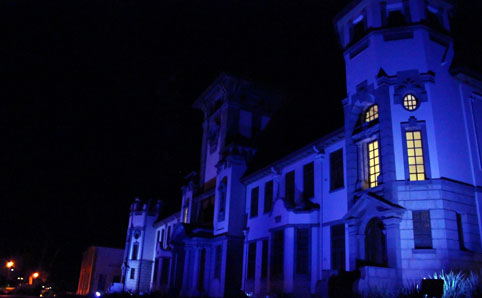 |
|
The Main Building on our Bloemfontein Campus will be illuminated in blue till the end of April to show support for autism awareness.
Photo: René-Jean van der Berg
12 April 2012
|
The Main Building on our Bloemfontein Campus will be illuminated in blue till the end of April to show our support for autism awareness, together with the rest of the world.
April is Autism Awareness Month and various iconic landmarks worldwide will be lit up in blue to honour those with autism.
Autism is one of only three conditions that are commemorated by the World Health Organisation.
Autism is a neurological condition that can be diagnosed in children as young as three years old. Worldwide one out of every 100 children is diagnosed within the autistic spectrum. This means that in South Africa a child is born with autism every hour and in the Free State some 400 children per year are born with the condition.
“Despite the high prevalence of autism in South Africa, South Africans know very little about it,” says Dr. David Griessel, an autism expert of the UFS’s Department of Paediatrics and Child Health. “Stories and films that attempt to portray autistic characters often create the wrong impression among the public concerning this complex illness. This distorts the reality since every child with autism is unique,” says Dr. Griessel.
He says it is important that all children with signs of autism are referred for evaluation as early intervention can prevent autism from further disrupting normal development.
Therapists and teachers who specialise in autism-specific treatment play an important role in this regard.
“However, there are no well-established services for toddlers in the Free State. Fortunately, there are classes developing in schools such as Lettie Fouché, Willem Postma and Pholoho, as well as in Kroonstad and Welkom. The Free State Autism Association has established a private school that offers a service to seven learners.”
For more information on autism in children or for information on special projects in the Free State, contact Dr. Griessel at +27(0)51 405 53177 or +27(0)51 405 3181.